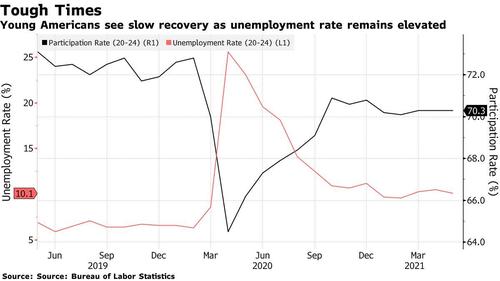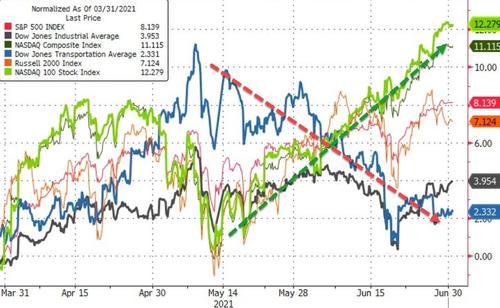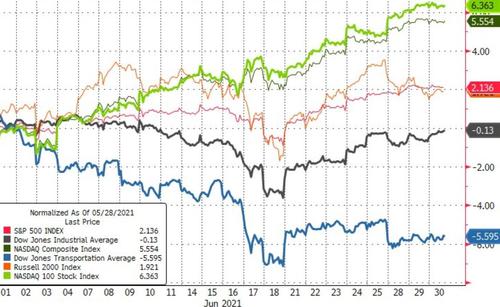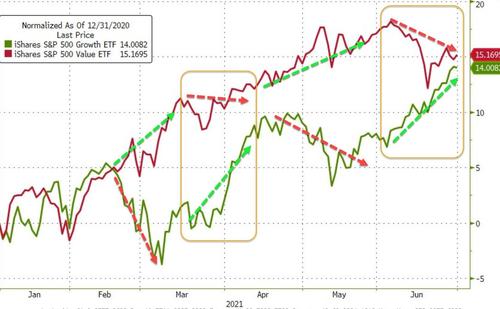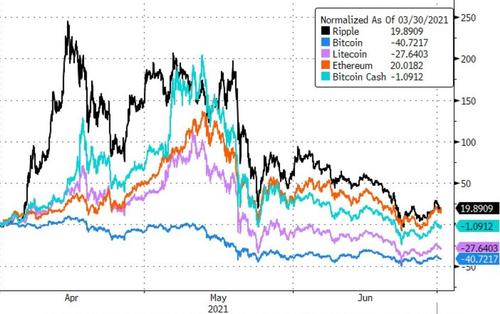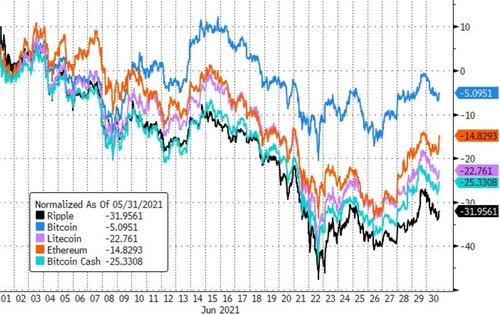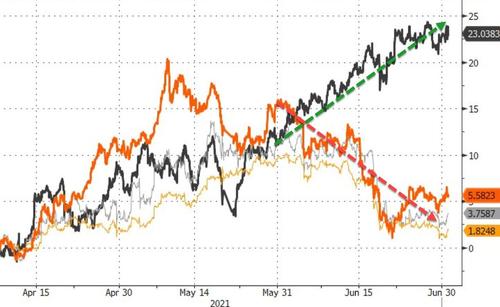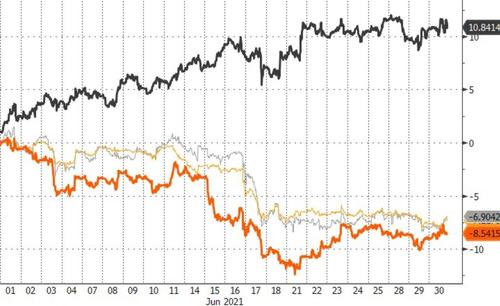One Fifth Of Young Adults Are Neither Working Nor Studying
If one defines a failed state as one where the most productive segment of society does nothing, then America is 20% of the way there.
According to a new report from the Center for Economic Policy and Research, 18.3% or almost one in five young adults in the U.S., were neither working nor studying in the first quarter as Black and Hispanic youth remained idle at disproportionate rates.
Specifically, some 3.8 million Americans aged 20 to 24 were not in employment, education or training (known as the NEET rate) in the first three months of the year. That’s up a whopping 24%, or 740,000, from a year earlier, before many lost their jobs or opted to defer college enrollment as campuses shut down at the onset of the Covid-19 pandemic.
Bloomberg notes that while the NEET rate has eased from its April 2020 peak, progress on reducing racial disparities hasn’t been as even. Almost a quarter of Black young adults were inactive last quarter, up from 20.9% in the same period of 2020. The rate for Hispanics in that age group was just under 20% and about 16% for White Americans. As usual, Asian somehow always find ways to be the busiest of all despite such widespread excuses for failure as “systematic racism” and “white rage.”
Last quarter’s surge was driven by joblessness, while school attendance rose moderately as campuses started to reopen, according to the CEPR study. Young adults are still experiencing double-digit unemployment rates.
“Current and ongoing recovery efforts need to do more to ensure that young adults in today’s diverse working class can improve their long-term prospects in the labor market and prosper in the years ahead,” said CEPR’s Simran Kalkat, an author of the report.
Needless to say, inactive youth is a worrying sign for the future of the economy, as they don’t gain critical job skills to help realize their future earnings potential. High NEET rates also foster environments that are fertile for social unrest, although since no politician will ever recognize the mindblowing Chicago gun violence, we may as well just ignore this.
Separately, for the first time in history, the jobless rate for teenagers in May was lower than the rate for workers age 20 to 24. However, the unemployment rate for those in their early 20s has improved over the last six months to 10.1% from 10.7%.
As Bloomberg concludes, this week’s jobs report will provide some insight as to whether states ending pandemic unemployment benefits will encourage young adults to return to work (spoiler alert: yes). It will also show if there are more opportunities in lower-paid service jobs as the economy continues to reopen, which teens are likely to apply for.
Tyler Durden
Wed, 06/30/2021 – 16:40
via ZeroHedge News https://ift.tt/3hfxvfe Tyler Durden


